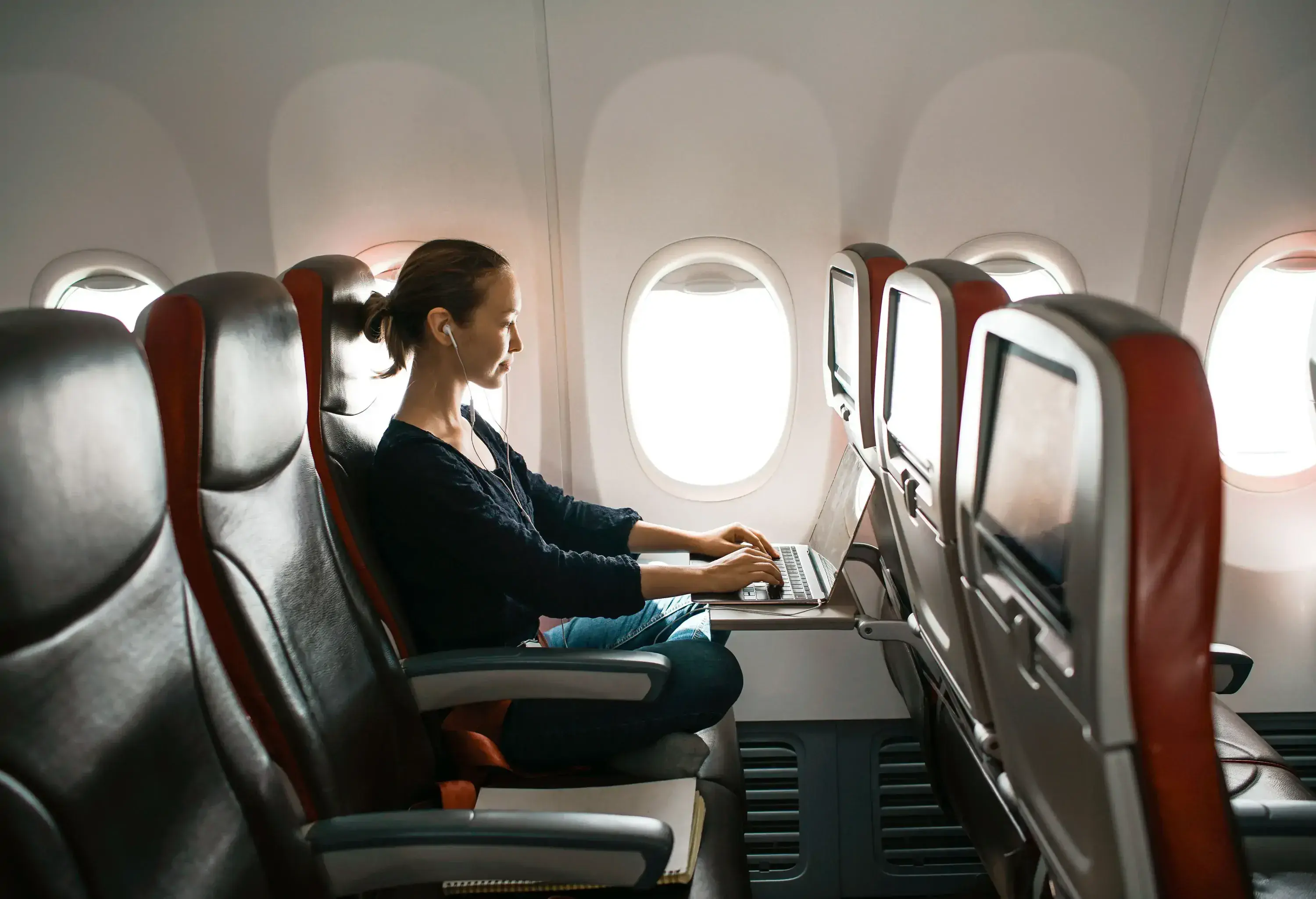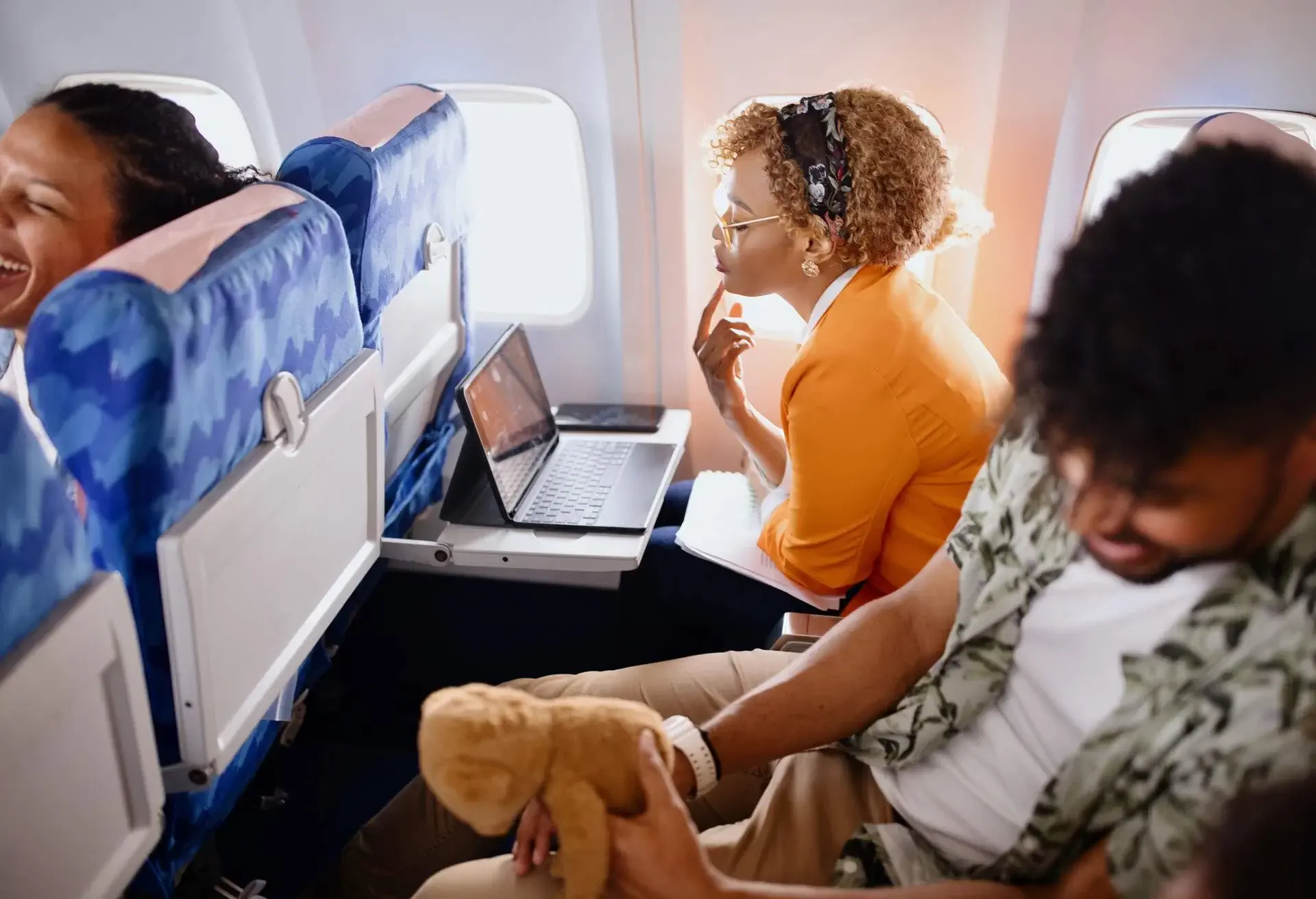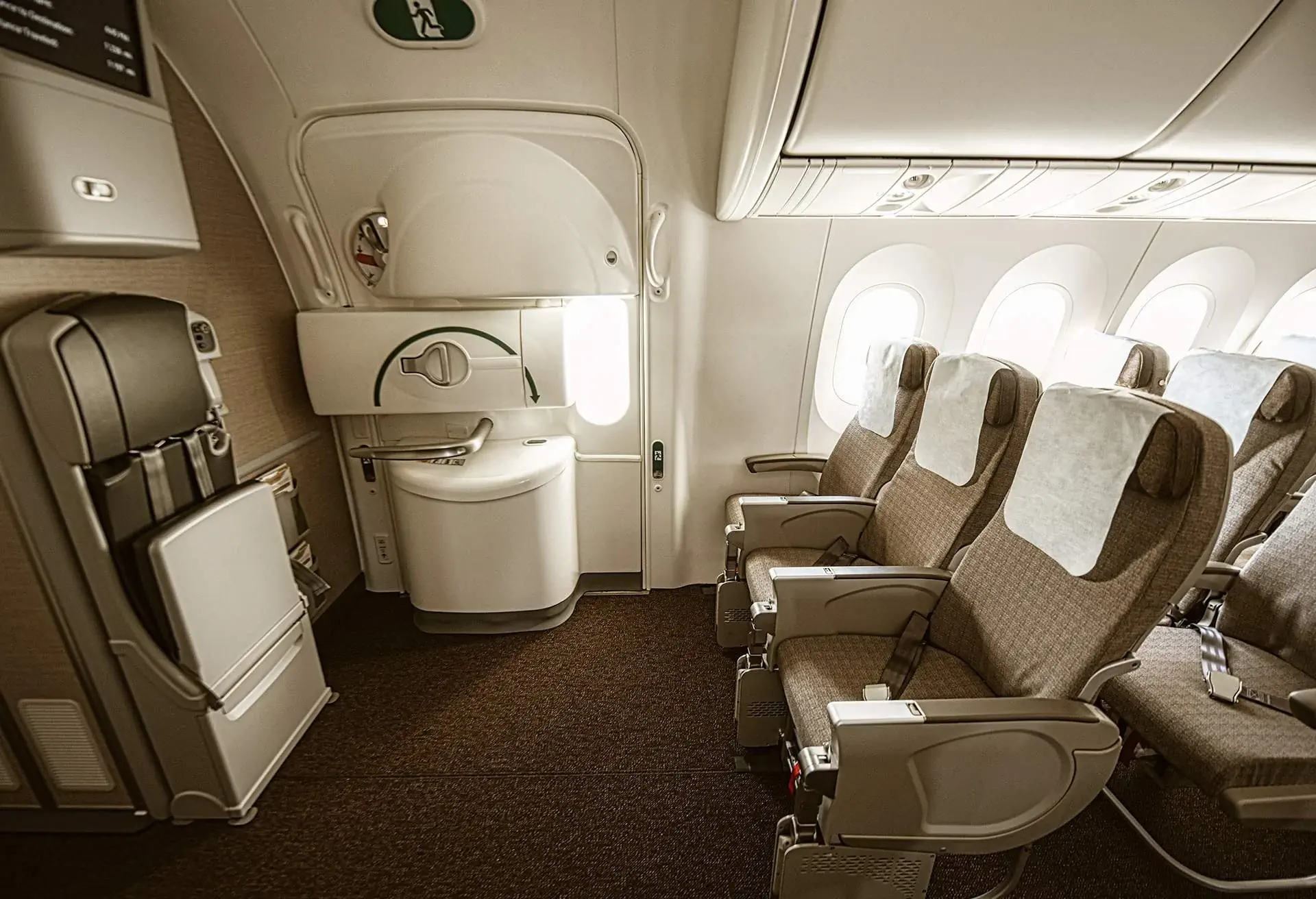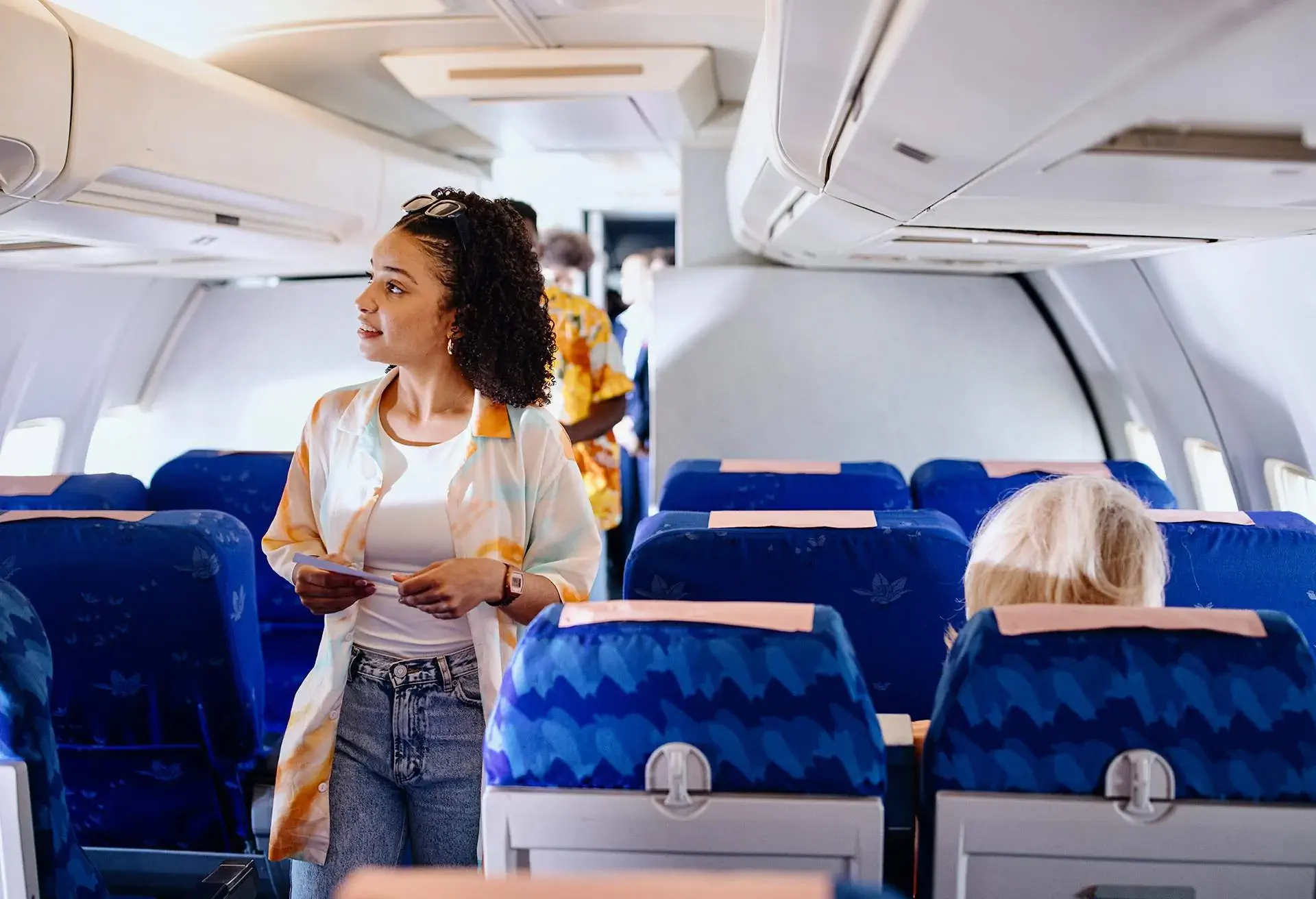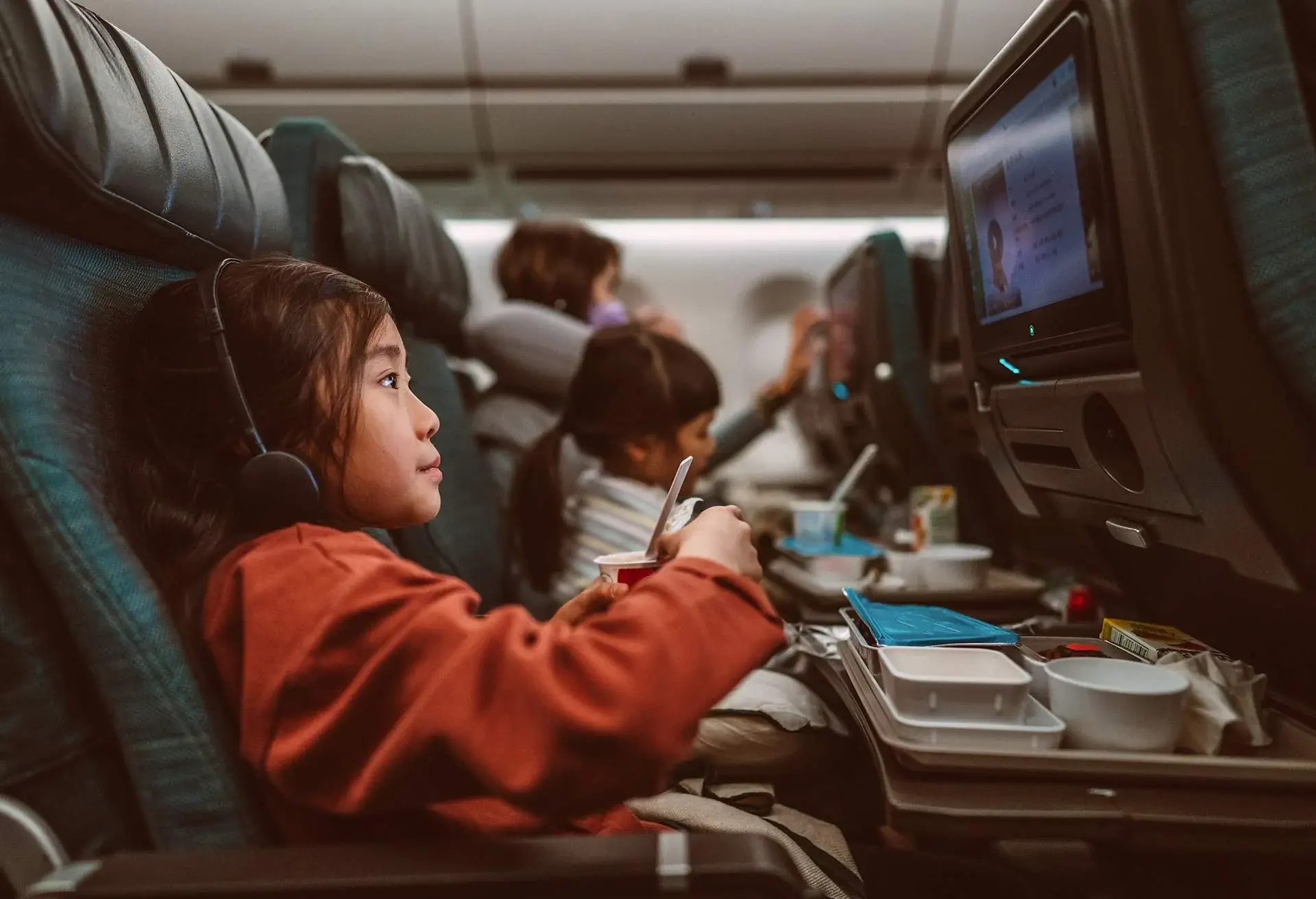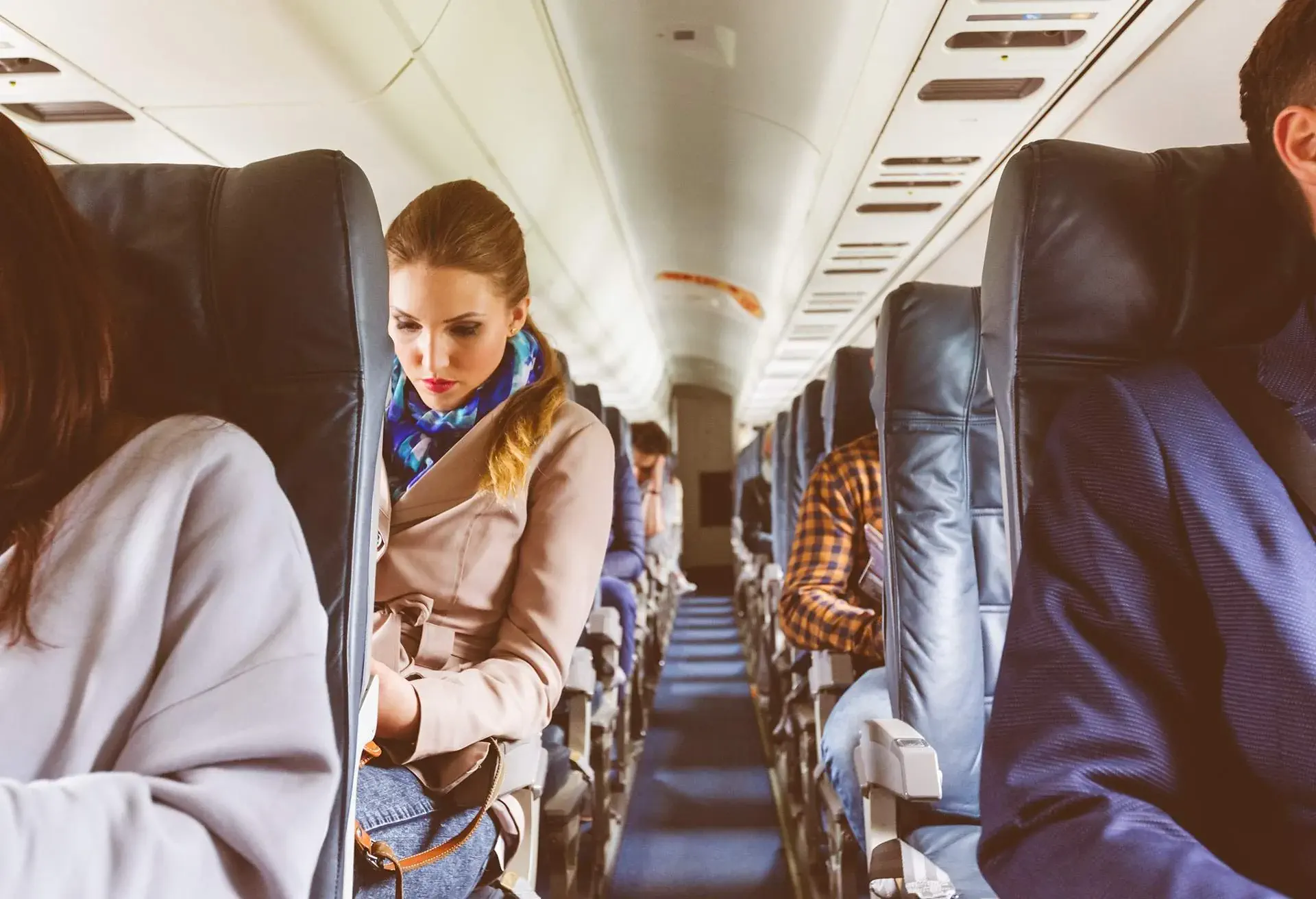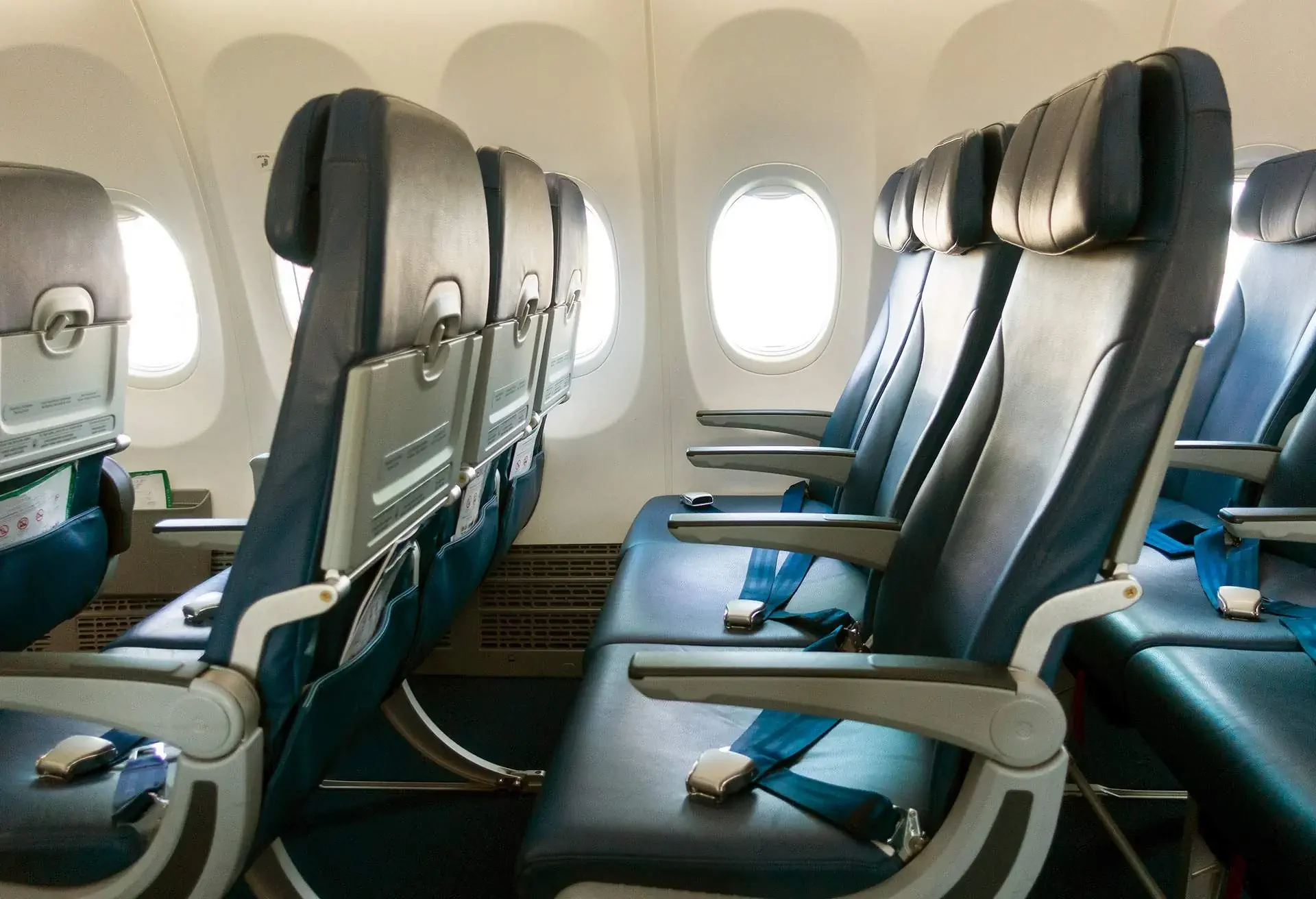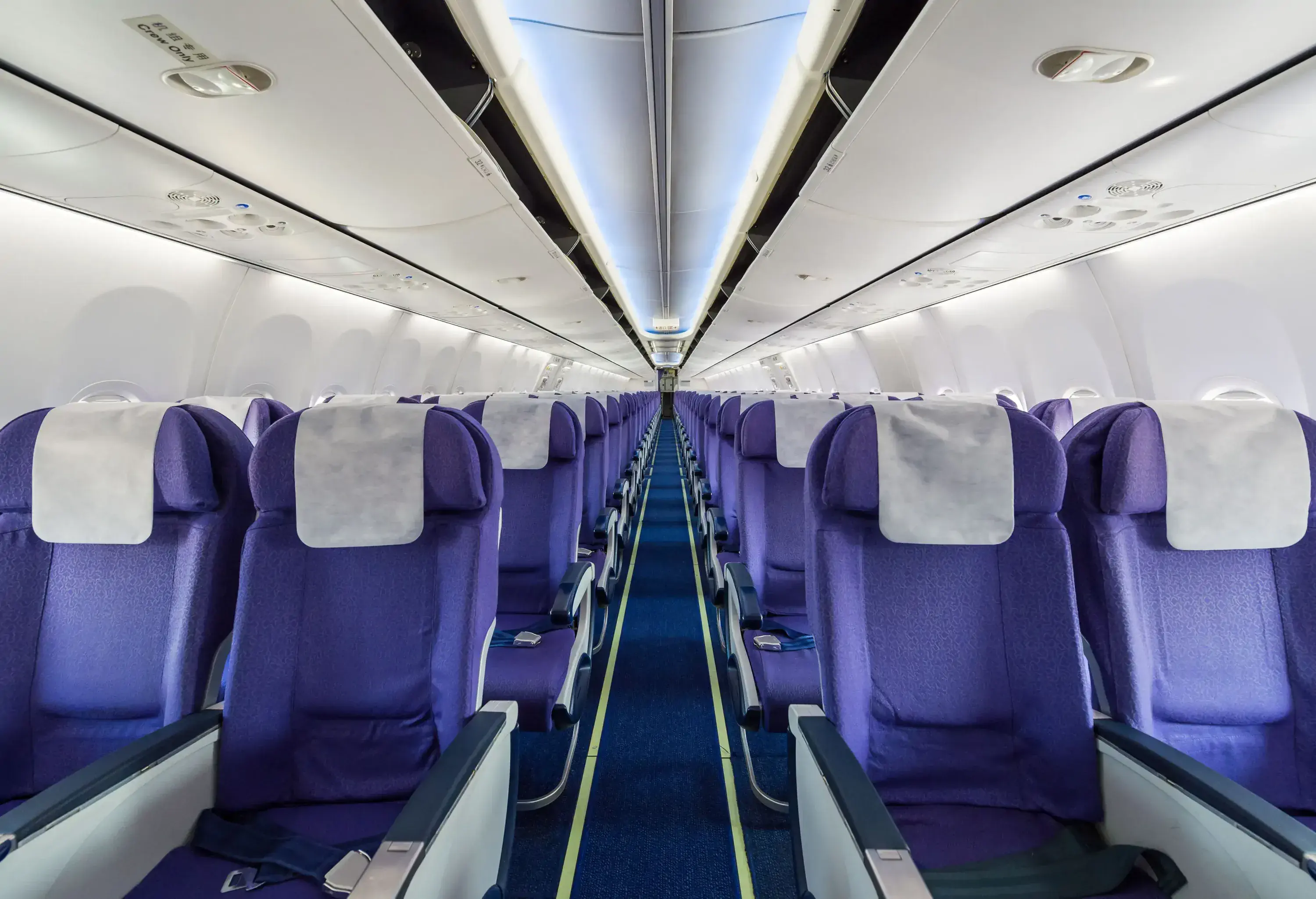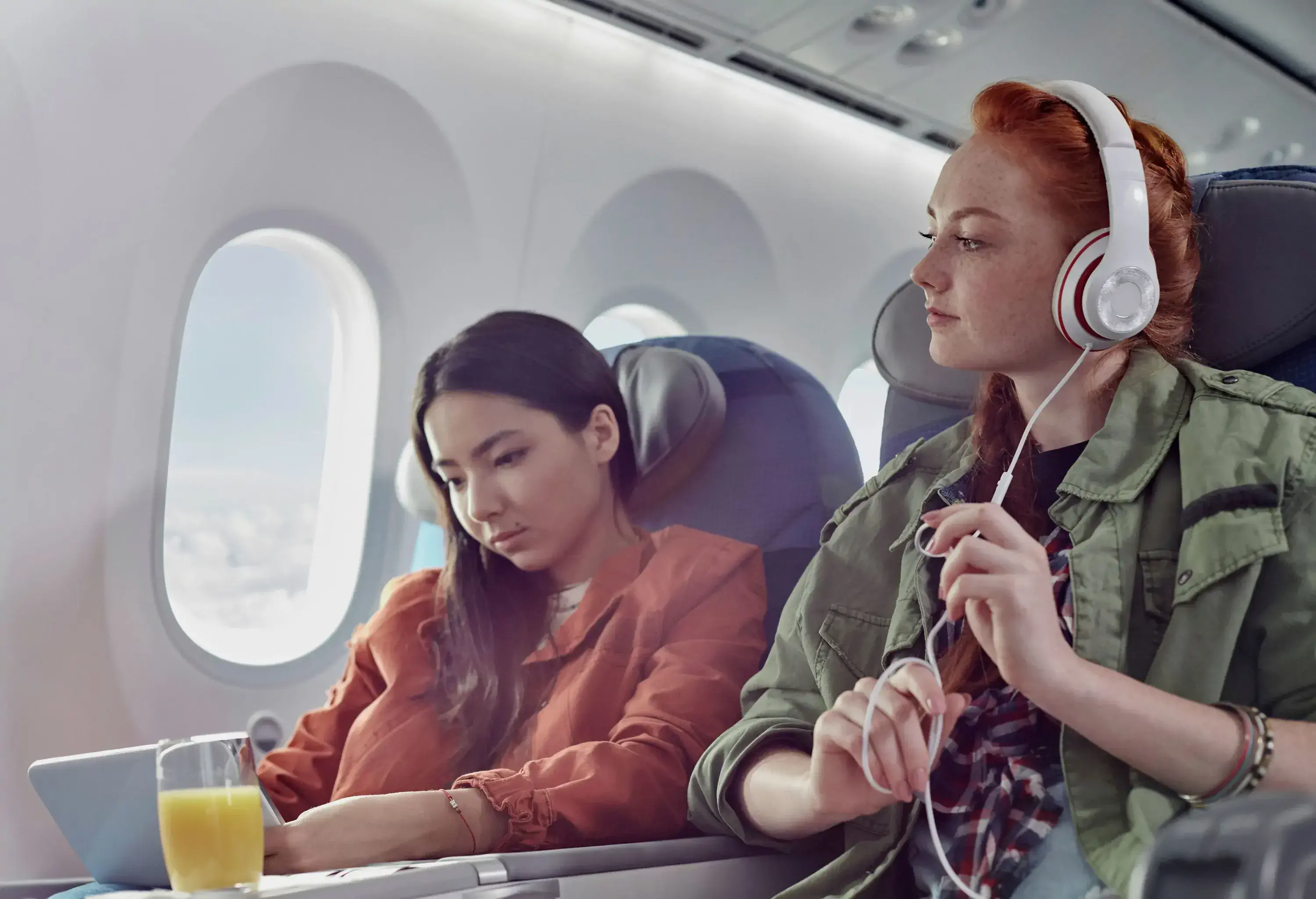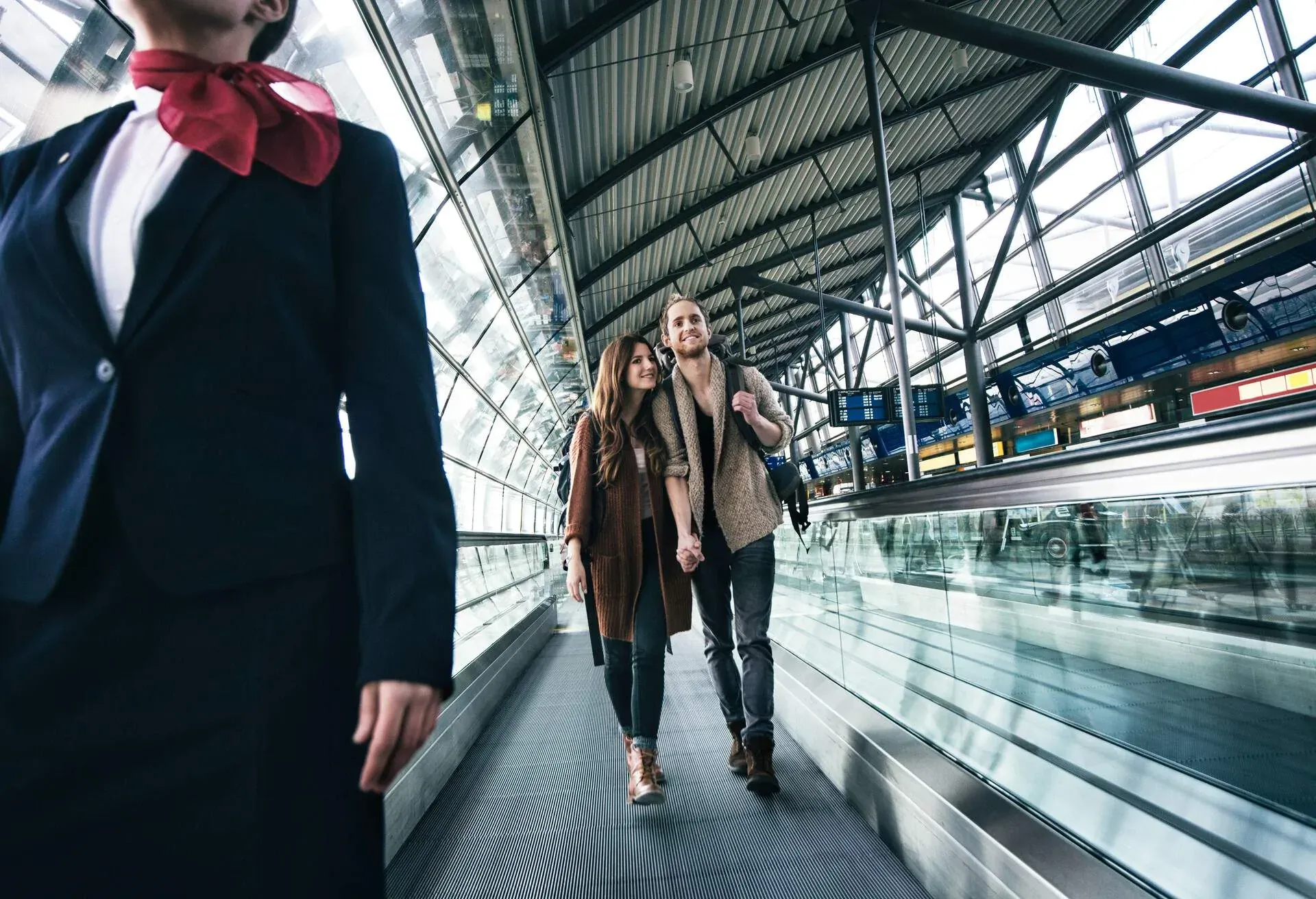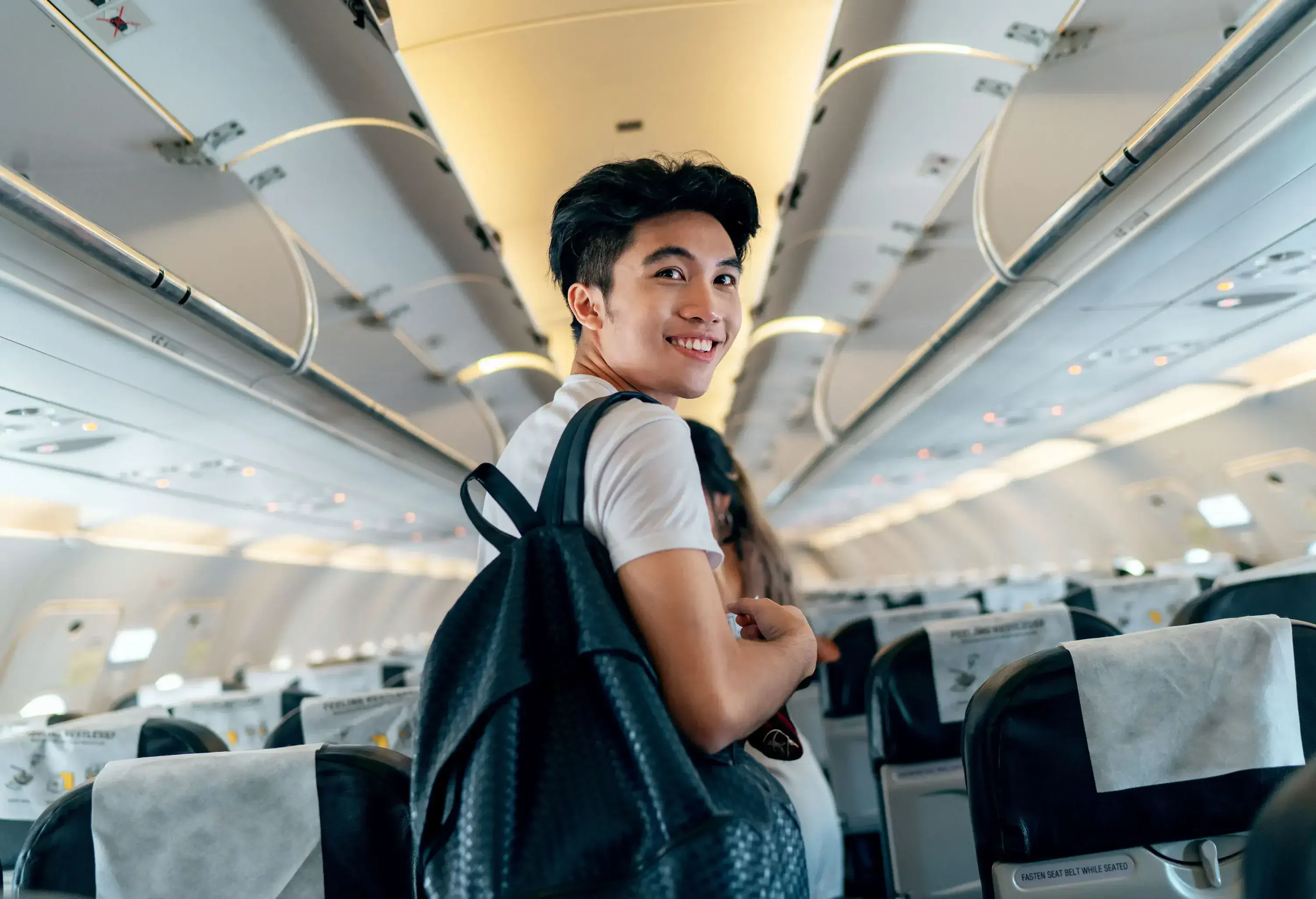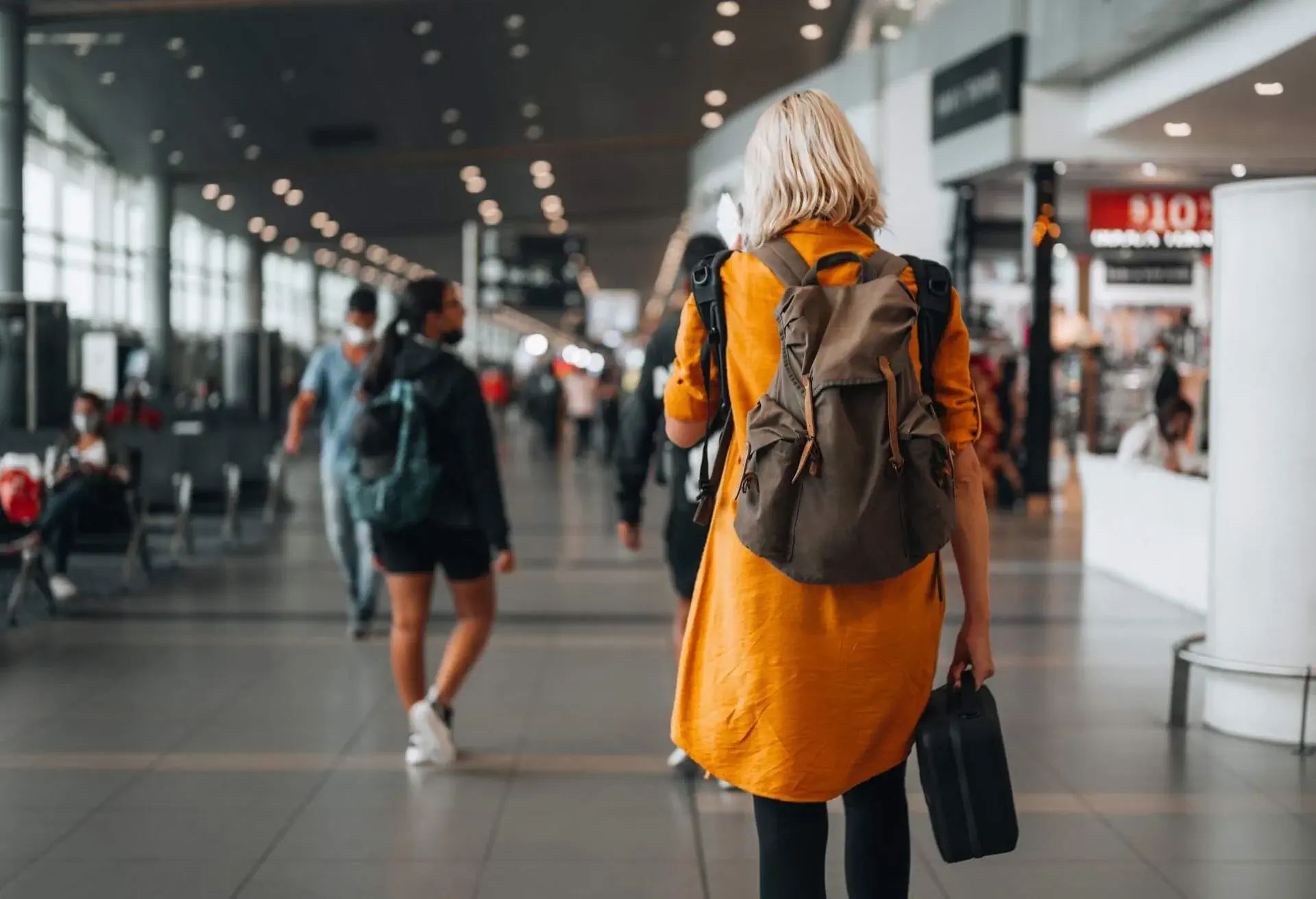The single most important thing you can do to improve your experience on a flight is to choose the best seat on the plane. That applies to all cabin classes, not just coach – and is even more important on long-haul trips.
But how do you choose? It’s not just about the aisle versus window debate. The right seat can make you more comfortable, help you feel safer and make it easier to sleep. Checking the seat map before you book can help you avoid tight legroom, proximity to the restrooms or a seat that doesn’t recline. Here’s what to look for.
What are the different types of seats on a plane?
Not all airplane seats are created equal, even if you’re flying business class. Aisle or window, front or back, exit or bulkhead. Knowing which works best for you can be the difference between a comfy flight and a cold, cramped or even smelly nightmare journey.
The aisle seat.
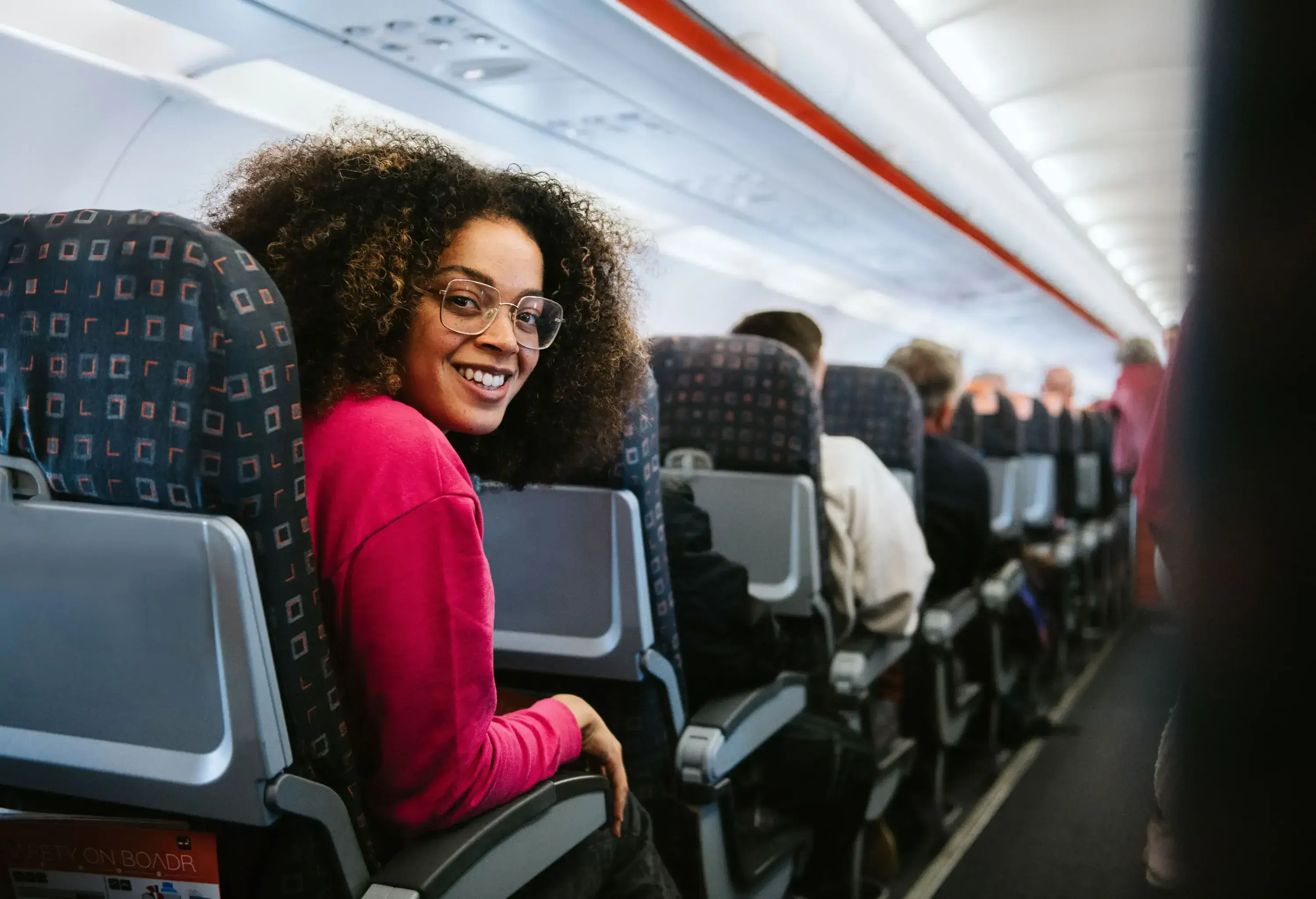
An aisle seat comes with two benefits, particularly important on long-haul flights. First, the ability to get up without disturbing your seat buddies, be that to visit the restroom, go for a wander, or raid the snack galley. Second, the simple act of stretching your legs out into the aisle – a lifeline if you’re tall like me.
On the flip side, sitting on the aisle puts you at the mercy of your seat mates. Whether they ask you to move or opt for the climb over, it’s almost guaranteed they’ll disturb you during the flight. You’re also exposed to aisle traffic – passengers bumping into you, cabin crew using drinks trolleys like battering rams and bags tumbling from overhead bins.
The window seat.
For the best views in the world and something to lean your head against, choose a window seat. As long as you don’t mind feeling a bit boxed in and are happy to disturb your neighbors, this is most people’s first choice.
Beware though – just because you’ve booked a window seat doesn’t mean there’ll be a window there. Some planes have a missing or blocked window, such as the infamous seat 11A on budget airline Ryanair’s planes, so double-check before you book.
In business class, some airlines stagger seat layouts meaning window seats may not be right by the window, or have a shelf or storage between them.
Expert tip: when I travel in Economy with my girlfriend, we book an aisle and window seat on the same row. As people tend to book a middle seat only as a last resort, we often end up with a free seat between us. If not, I’ve never met a middle-seat passenger who wouldn’t swap for an aisle or window. It’s worth a try!
The bulkhead seat.
Bulkhead seats sit at the very front of a cabin or just behind a dividing wall. At first glance they look appealing: no row in front, decent legroom and often marketed as a premium option. But the reality is mixed.
That solid wall limits how far you can stretch out, and there’s no under-seat space for bags or feet. These seats are also popular with parents traveling with babies since bassinets attach here, which may not thrill nearby passengers. Add in their proximity to the galley and restrooms, and you may have to deal with cold drafts, more noise, smells, and even passengers loitering for the lavatory.
For movie lovers, there’s one more catch: you must stow your entertainment screen for takeoff and landing, trimming your viewing time.
The exit row seat.
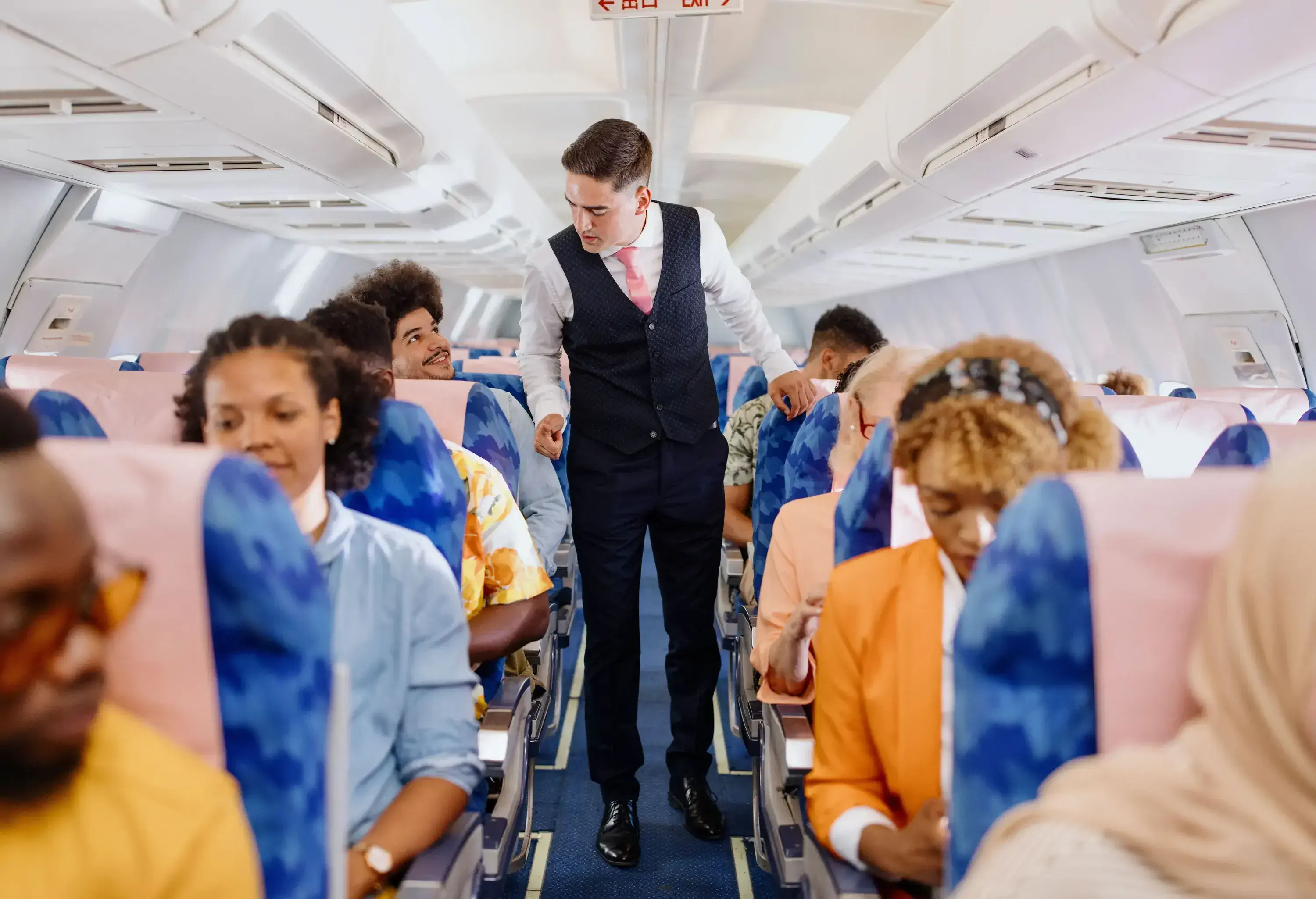
Exit row seats promise space — often the most generous legroom in economy — and airlines know it, which is why they usually charge extra. For many travelers, me included, it’s the best value on long-haul flights. But there are trade-offs.
On some wide-body aircraft, the slide housing juts into the window seat, eating into space. You may find recline restricted too: in double exit rows, the front row doesn’t recline at all and neither do the seats directly ahead of the exit. Storage is another consideration: everything must be packed away for takeoff and landing to keep the exit clear.
And then there’s the temperature — these rows often run cold. If you book one, pack layers. I never fly without chunky socks and a hoodie.
Back row seat.
Just beating out the row of seats in front of the emergency exit and the dividing bulkhead, back row seats win the award for worst on the plane.
Jammed up against the rear cabin wall, they have limited or zero recline and some are narrower as they’re infringed on by the plane’s tapering fuselage. As they’re so close to the rear toilets and galley, they’re once again subject to noise, queueing passengers and pungent aromas.
What is an airline seat pitch?
In economy class on most airlines, seat pitch is typically 30 to 31 inches, with some stretching to 32 and some cutting it short to 29. The problem is that pitch doesn’t account for different seat designs or extras like footrests, tray tables or the seat’s framework.
In other words, take seat pitch with a healthy dose of skepticism when it comes to real-world comfort.
Where is the best place to sit in economy?
Once you’ve decided if you’re team aisle or team window, decide if you’re willing to pay extra for a bulkhead or exit row seat.
If you are, my choice is always the exit row for the added space and guarantee you won’t be sitting next to babies or children. If not, a window seat close to the front of the cabin is convenient for speedy disembarking.
Best airplane seat by traveler type.
What constitutes the best economy seat will very much depend on your specific situation. It will vary if you’re flying solo or with your family, even if you’re on business or pleasure. And the best seat on a long-haul flight may differ to short-haul, depending on value weighed against added cost.
Best airplane seat for tall people.
While exit row seats and bulkhead seats are both commonly marketed as offering ‘extra leg room’, the difference between them can be significant.
Exit row seats are undoubtedly roomier – not only do you get more leg space but you can also stretch feet out under the seat in front. Bulkheads often prevent that meaning more leg room but less stretch room. I’m 6ft 2 and actively avoid bulkhead seats for this very reason.
Best airplane seats for families.
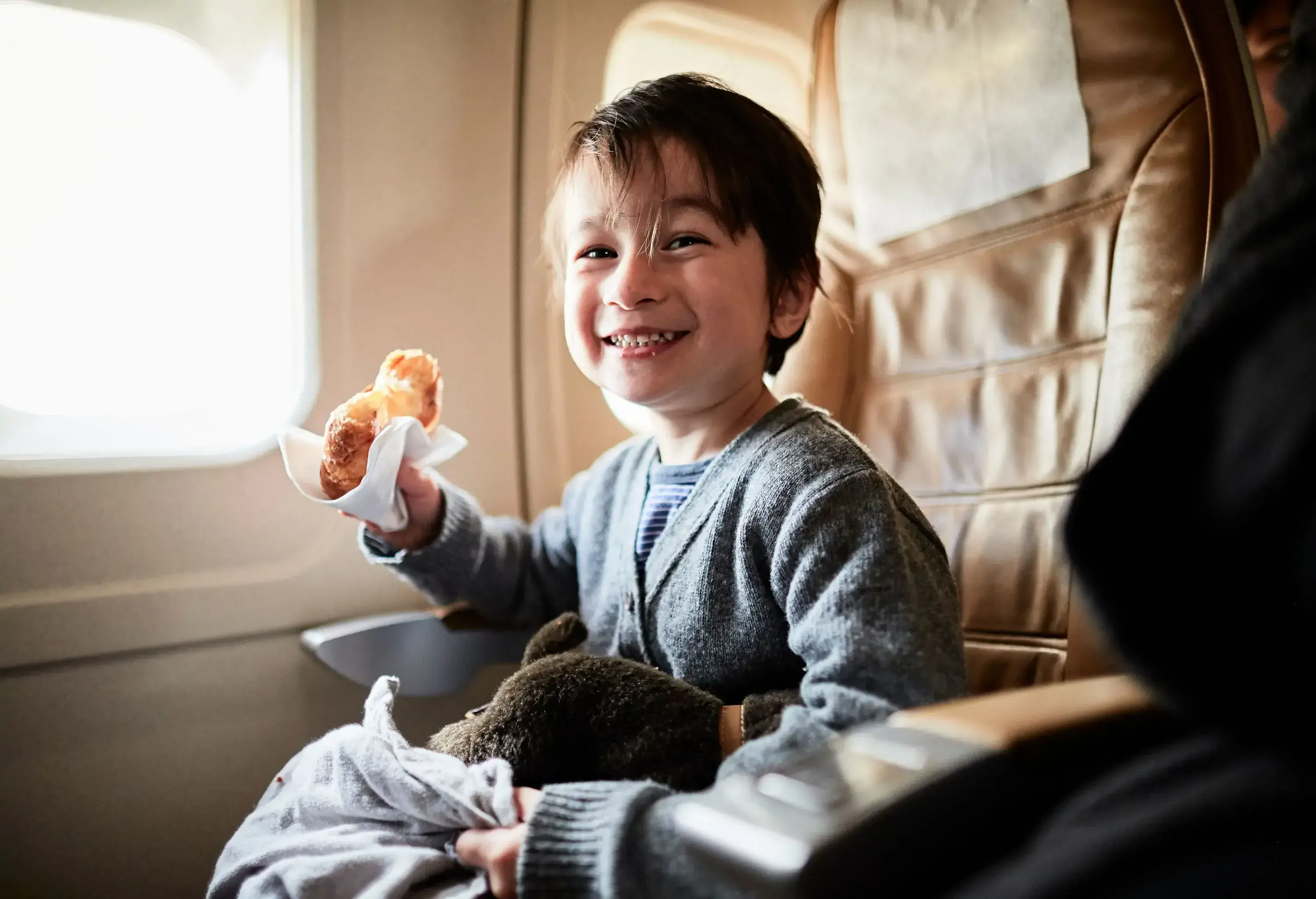
If you’re flying with youngsters, on the other hand, the bulkhead seat row is your best bet. This is where you can attach bassinets for babies. The extra space means kids can spread out with blankets and toys and get to the restrooms easily. And having no seats in front means no one is bothered by bumps and knocks from restless swinging legs!
Top tip: It’s best to seat youngsters in window seats. The views will keep them occupied and cabin crew won’t have to pass hot drinks and food over them.
Best airplane seat for solo travelers.
This will depend on whether you’re an aisle or window seat kind of flyer. Unless you’re particularly tall, the window seat offers the best overall experience. Views, your own undisturbed space and something to lean against for an in-flight nap.
Best airplane seat for business travelers.
If you’re flying on business but seated in economy, aim for an aisle seat as close to the front of the plane as possible. The aisle seat gives you more room to use your laptop and proximity to the front means quicker disembarkation.
Best seat on a plane in economy for long-haul flights.
While it’s possible to suffer almost any seat for a short-haul hour or two, it’s a different story flying long haul. Comfort is the prime concern. Exit row seats are best – and if the flight is more than a few hours, usually well worth the extra cost. Avoid bulkhead seats, as you’ll likely end up next to kids or babies – not ideal if you want to sleep.
There’s one downside to factor in. Exit row seats don’t typically have movable armrests, so there’s no stretching out if your row is empty.
Best airplane seat for nervous flyers.
Flights can be noisy, bumpy and nerve wracking for many. If you’re a nervous flyer, seats over the wings are the most stable part of the plane, where you’ll typically feel a little less turbulence. Aisle seats are a good choice, as they can feel less claustrophobic and offer easier access to restrooms and cabin crew if you’re feeling unwell.
Best airplane seat for light sleepers.
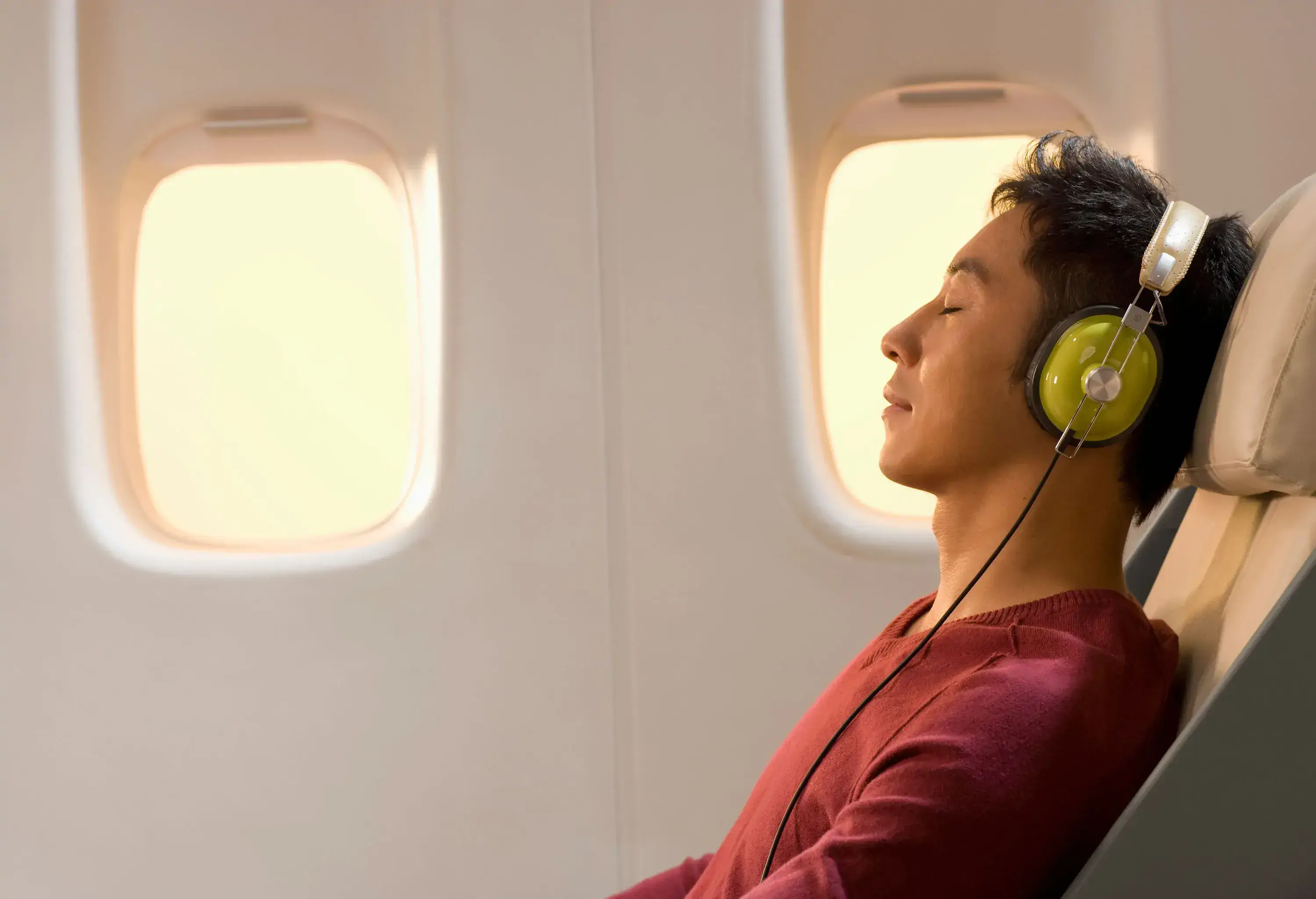
Anonymity is your ally if you’re a light sleeper. A window seat midway along the front half of the plane keeps you away from the galley and restrooms. Being in front of the engines can make for a quieter, smoother flight too.
What else can I do to choose the best airline seat?
If you’re really committed to finding the best seat possible, look to the plane you’re flying on. Lots of routes are covered by different airlines flying different airplanes – some better than others.
You don’t need to become a certified plane spotter. If you’re flying long haul, opt for a Boeing 787 Dreamliner, Airbus A350 or A380 if they’re available. Spacious, quieter and more modern, they have higher cabin pressure and humidity, which helps reduce the effects of jet lag. The A380 in particular has won many fans for its spacious interiors, comfy seats and top notch facilities. Huge windows, too.
For other planes, knowing the seat layout is your key to success. Most short-haul flights follow a 2-2 or 3-3 layout where choice is limited to two or three seats on either side of the aisle.
Long haul planes are wider, with three seating columns in varying layouts – 2-3-2, 3-3-3 or 3-4-3. For the former and latter, a seat on either side is preferable to the middle column where you’re far from a window or aisle access. On a 3-3-3 layout, an aisle seat in the middle column means only one seat buddy to disturb you. The best of the bunch is 2-3-2, where if you sit on either side you’re guaranteed an aisle or window every time.
How KAYAK helps you choose the best seat on the plane.
When searching for flights on KAYAK, there are a range of filters and information points you can use to choose the fare, plane and seat that suit you best.
1. Choose your airplane type.
Once you’ve entered your origin and destination airports and dates, you’ll land on the search results page. Look for the Aircraft filter. Here, you can search the type of airplane you want to fly on, from regional to narrow and wide-body. If you’re particular about your manufacturer or seat layout, you can also filter by airplane model.
2. Choose your fare type.
Select your chosen flight and you’ll land on the booking page. Here, you can see the different fare types and what each includes – or doesn’t – such as seat selection and extra legroom, or whether they’re available for an added fee. The summary column confirms the type and model of airplane you’ll be flying on.
3. Confirm your choices.
Confirm your fare and you’ll navigate to your chosen provider’s page. This is where you can tailor your seating requirements based on your fare and what extras are available. If you’re selecting a seat, use the seating plan to make sure you’re in the right spot.
You’ll often find, for example, that it’s cheaper to book a basic fare and pay for a specific seat or extra legroom than it it is to upgrade to a fare where they’re included. If you’re not checking bags or fussed about boarding first, it’s usually a more economical way to fly.
What is the safest seat on an airplane?
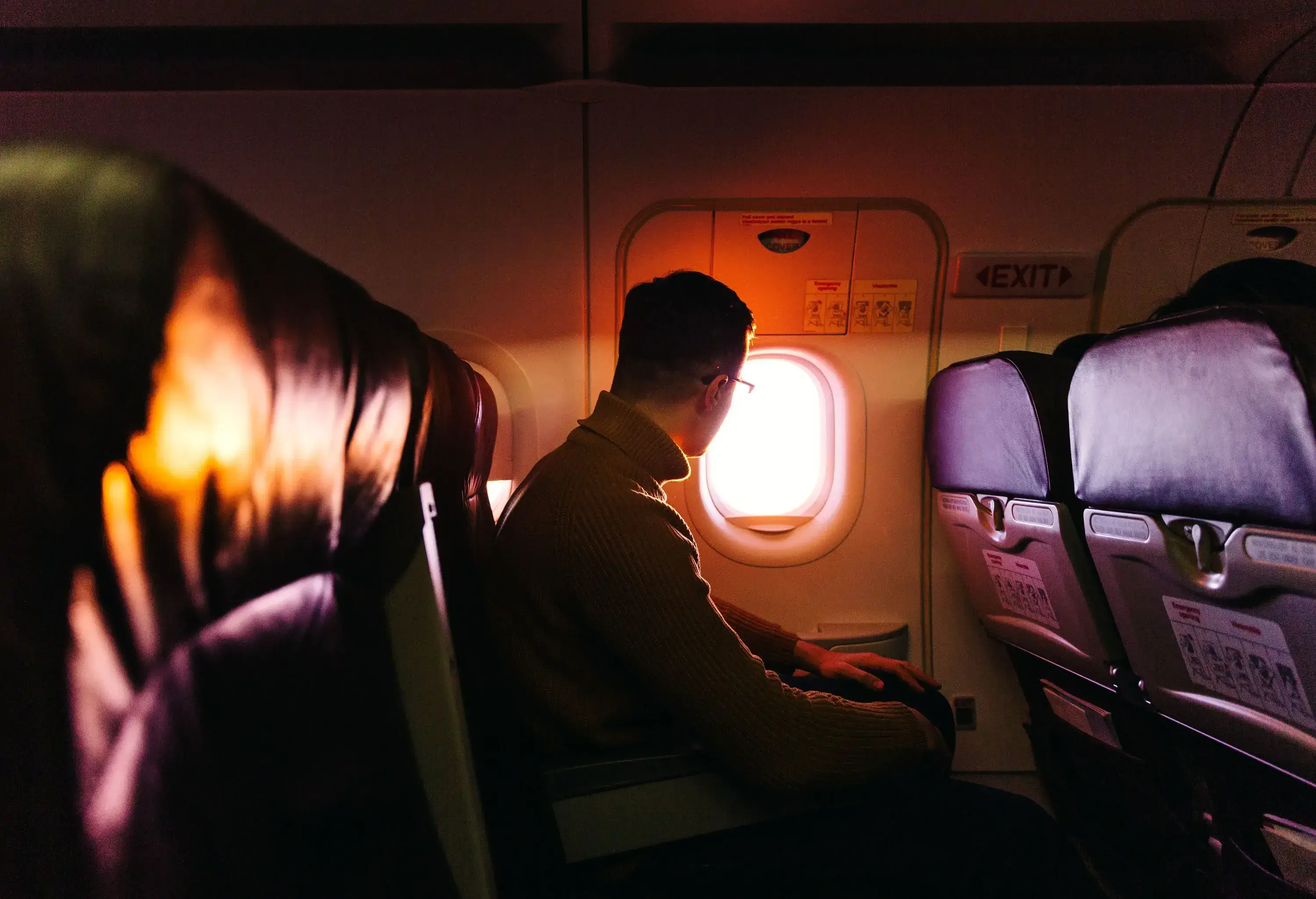
A long debated issue, the basic reality is that the safest seat on a plane would depend almost entirely on the type of accident the plane is involved in.
Statistically however, the safest seats are in the plane’s middle rear, as close to the emergency exits as possible. The thinking here is that proximity to an exit combined with the structural support this part of the plane offers against impacts makes it the safest. When planes do go down, more often than not it’s nose first putting seats in the front of the plane at greater risk.
An aisle seat offers greater freedom to escape your seat, but also increases your risk of being hit by debris. A recent study by the Federal Aviation Administration’s (FAA) Civil Aerospace Medical Institute (CAMI) investigated the effects of seat width and pitch in airplane evacuation performance.
The study’s conclusion “hypothesized that as long as a passenger can sit in a seat, its pitch and width should not significantly affect evacuation time for the cabin as a whole because the time spent by passengers queuing at the exit door and in the main aisle is greater than the time required for a passenger to exit the seat and seat row.”
The most important way to be safe in case of an emergency is to orient yourself properly when you board the plane. Locate your nearest exit both behind and in front. While the exit behind may be closer, it’s wise to know where the front one is too. Studies have shown that in the event of an emergency, passengers will push forward towards an exit.
No matter where you sit, according to the NSC, flying is still the safest form of transport.
Best seat on a plane FAQs.
Typically, the more room you have the more comfortable you’ll be, and so you’ll have more chance of getting some shut eye. Otherwise, choose a window seat where your seat mates won’t disturb you trying to get past.
You can create a personal, undisturbed space and lean against the fuselage for a more comfy sleeping position. Just don’t forget to bring a coat or sweater to use as a pillow against the wall – they work far better than neck cushions in this situation.
Opt for a window seat in the front half of the plane. You’ll be far from the noise, light and crowds of the galley and restrooms and being in front of the engines is quieter and smoother than sitting behind them.
Sitting over the wings will give you the smoothest take-off, flight and landing. This is the point where gravity meets lift and is the most stable point in the plane, subject to lesser forces than the nose and tail. If you suffer from airsickness, this is the best place to sit.
The plane’s engines are below the wings, which means sitting over or behind the wings is noisier than sitting in front of them.

